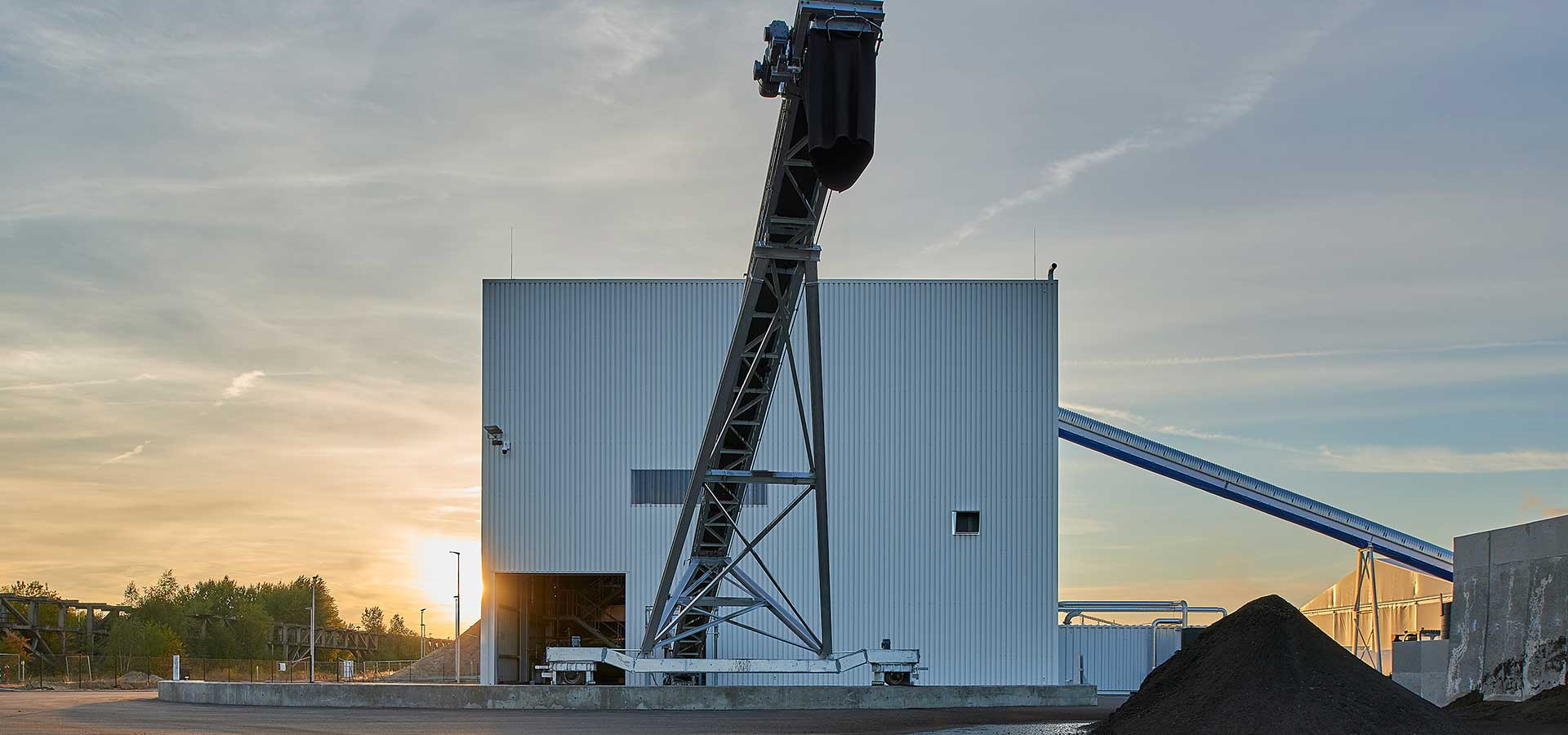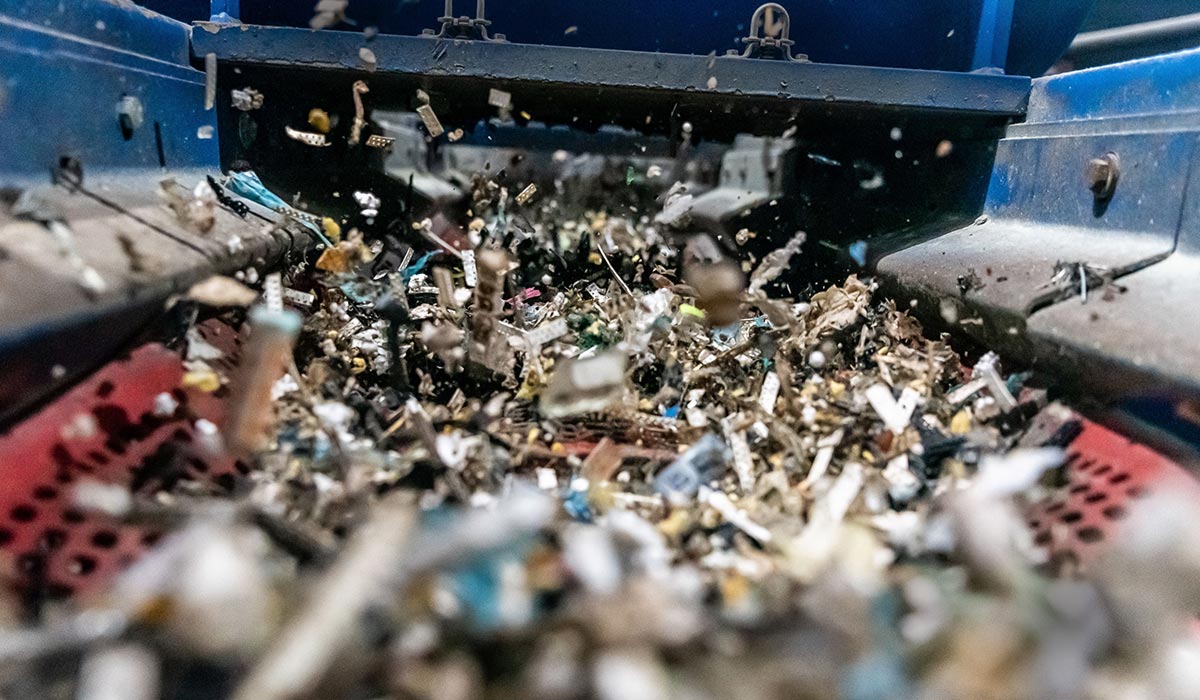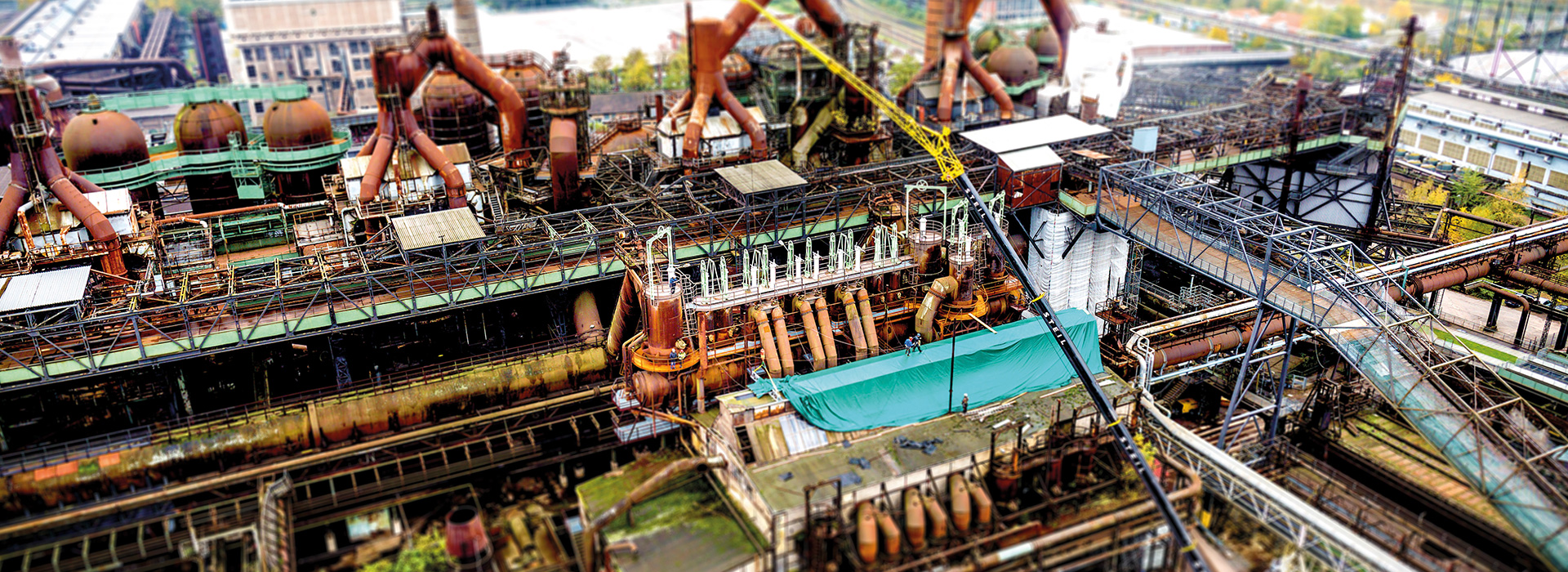Böhlen. For the first time, Lobbe, in cooperation with ST-Cleaning, has used a robot to clean tanks at the Böhlen plant of Dow Olefinverbund GmbH at the DOW site refinery in Böhlen. Like an unmanned space flight, the cleaning of a 40,000 cubic meter tank by robot starts on a foggy November morning. It is not the first tank that Lobbe has cleaned by robot in cooperation with ST-Cleaning. "The pilot projects have been completed and the process is now optimized," says Bastian Spitzner, who is on site when the robot is delivered. "The setup work takes more time than with manual cleaning, but overall, unmanned tank cleaning is faster: the robot doesn't get tired and can work 24 hours through, 7 days a week." With manual cleaning, which is carried out independently of outside air and with chemical protection suits, the skilled workers have to take turns every hour. Multi-shift operation would put a great strain on personnel capacities.
The naphtha tank at Dow's Böhlen site, a vessel 52 meters in diameter, was built in 1996 and last cleaned in 2002. Naphtha is a highly volatile crude gasoline substance. Solids from preceding processing steps and from the storage itself collect there; at present, this is likely to be around 1,000 metric tons. Since the tank is to be completely renovated - the roof will be replaced later, the floors renewed - it must be emptied and freed of residues. To do this, the gaseous atmosphere in the tank was first extracted, replaced by fresh air and the remaining residues flared off. Only when the concentration of pollutants has reached a minimum level in accordance with regulations can the manhole be opened to create a sluice from there to the outer area. The robot is to enter the tank through this airlock
For several months now, Lobbe Industrieservice has been cooperating with the company ST-Cleaning to automate further work processes as much as possible. More automation also means greater occupational safety, as skilled workers are no longer directly involved in the hazardous area. At Dow in Böhlen, the components are gradually being assembled. In addition to the actual robot, a container is set up for the control system, and gas scrubbers, suction vehicles and hydraulic drives are installed. The suction hoses have to be connected to the robot, as well as a water supply line so that the solidified sludge inside can be sprayed on and made suitable for suction. The three LED-illuminated cameras are also installed in advance. The robot itself is small enough to enter the tank through a manhole at least 60 centimeters in diameter. However, it does so only after an area of about two by two meters at the entrance has been cleaned and cleared of debris. The robot weighs about 500 kilograms and the chains of the drive are magnetic. In this way, the robot holds on to the metallic tank floor, provided that the floor has already been cleaned at the entry point. Once the robot is inside the tank, its cameras and lever arms extend. Now navigation can start in the container set up for this purpose. The direction of travel and speed can be set using a joystick. The controller sees an overview image on the monitor as well as the front and rear ends of the robot. This also prevents loops from forming in the hoses.


